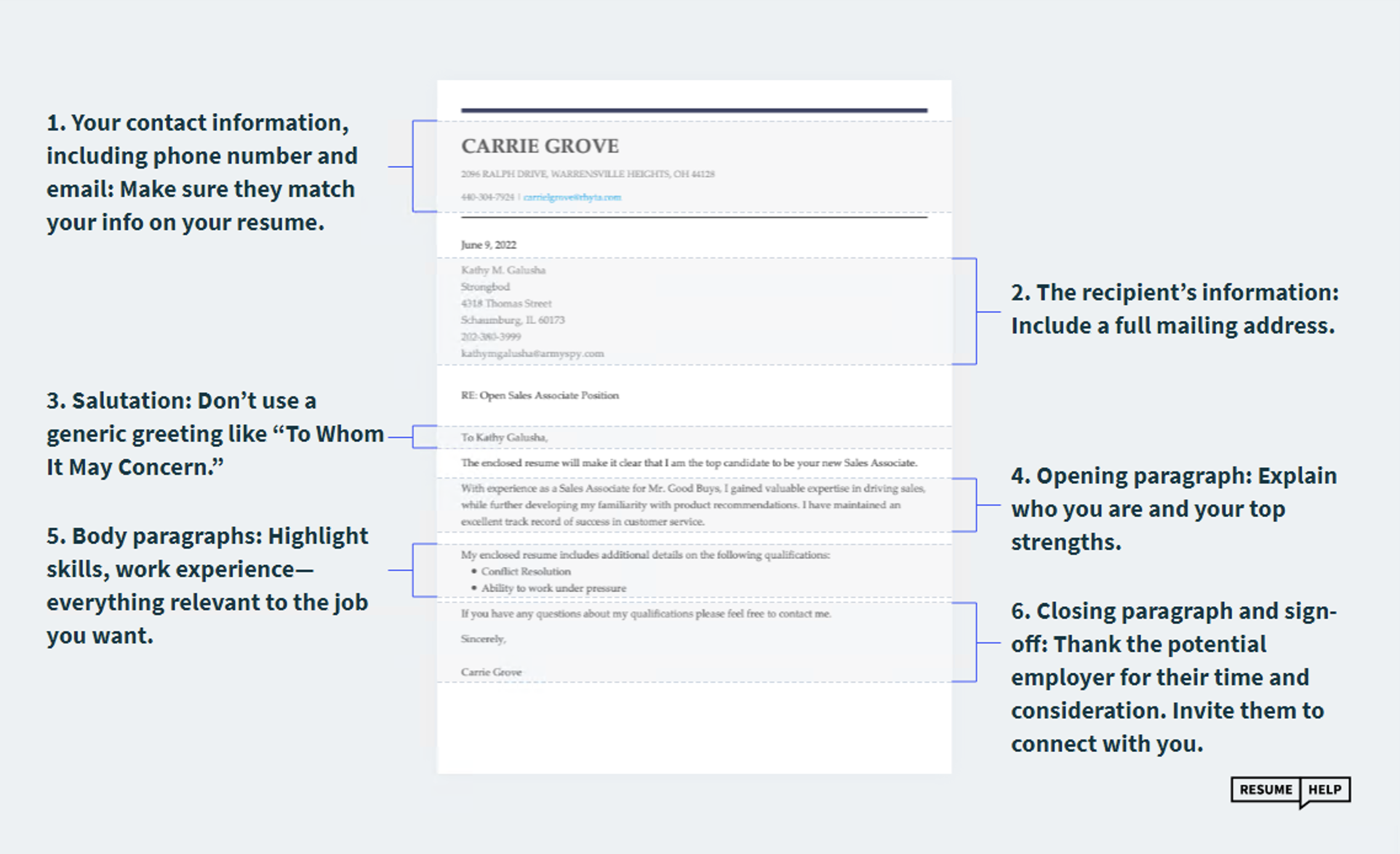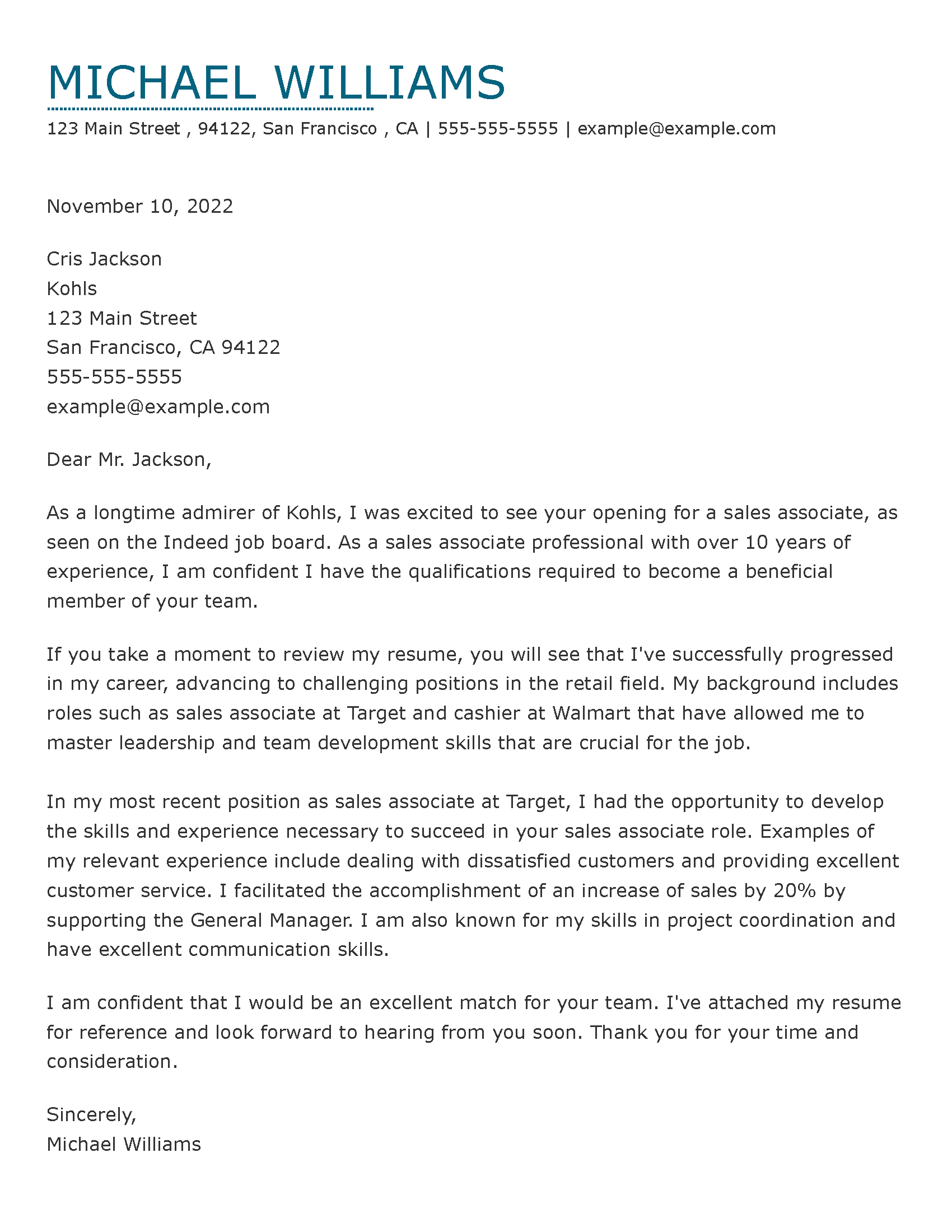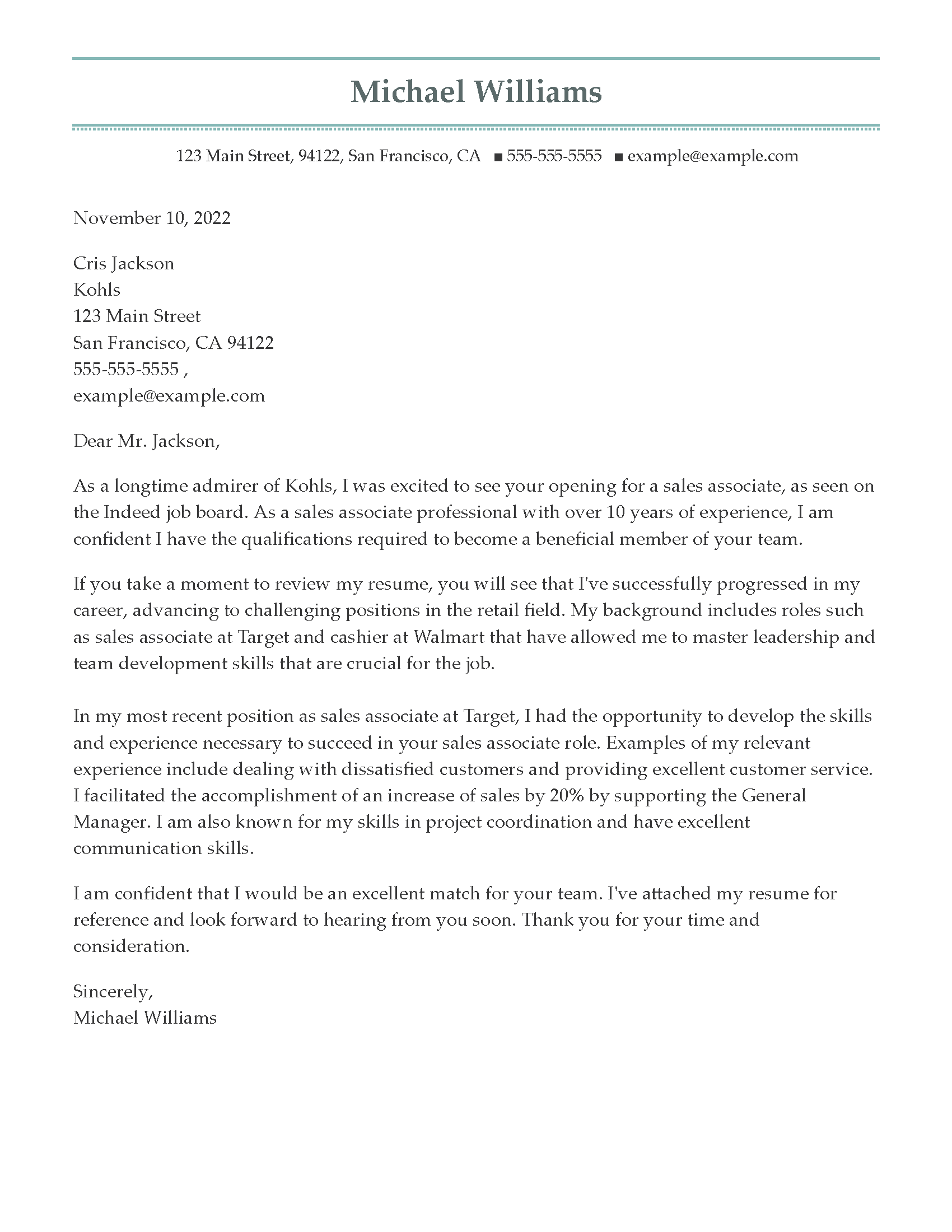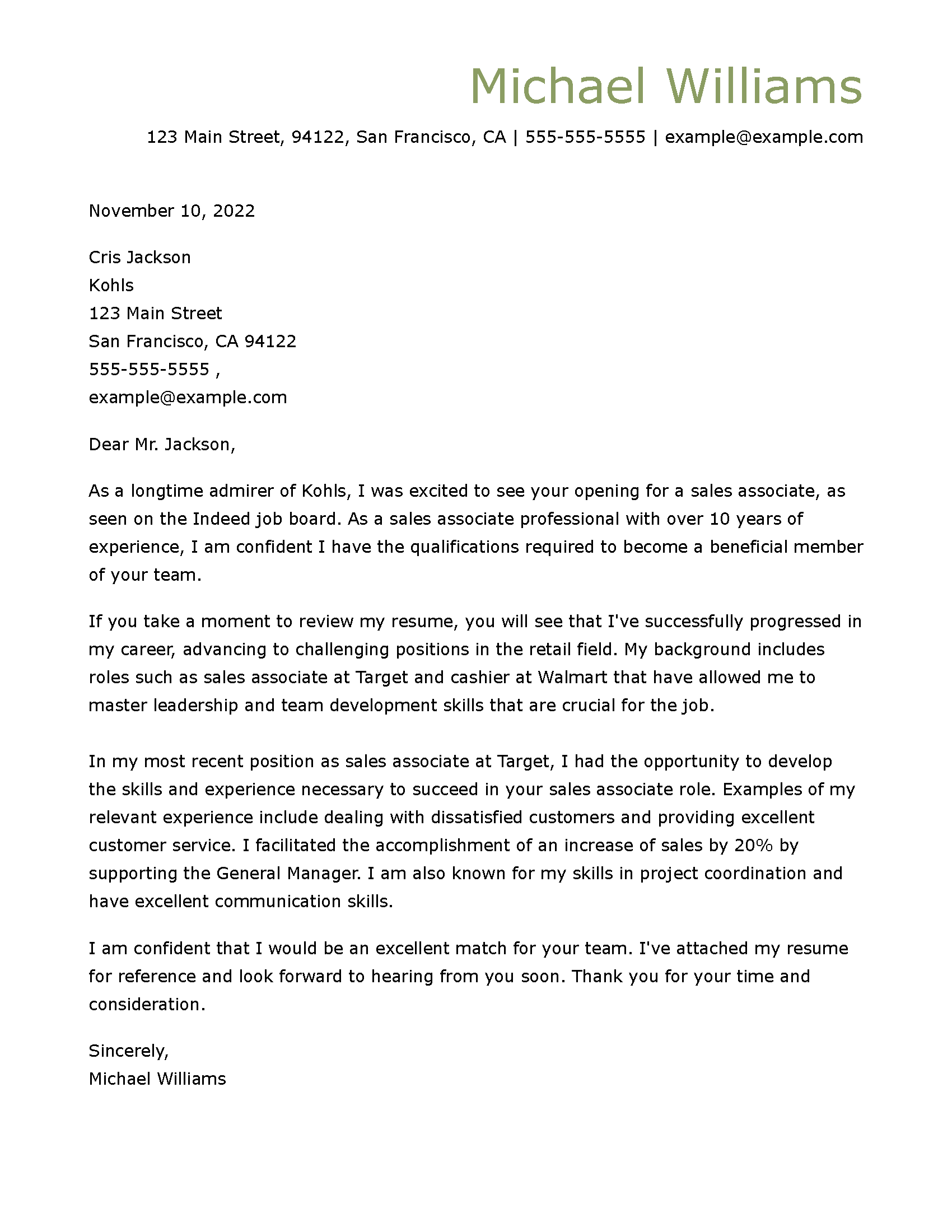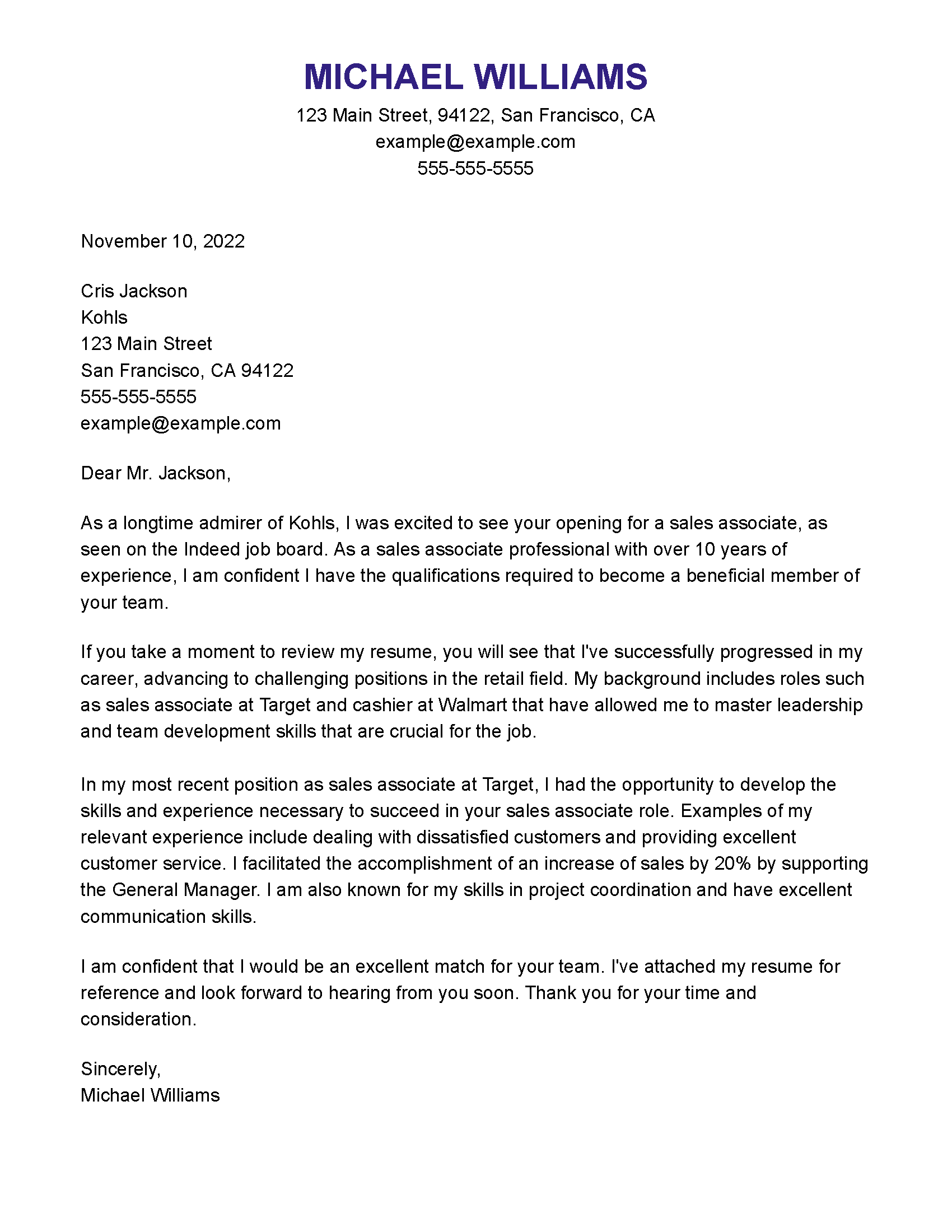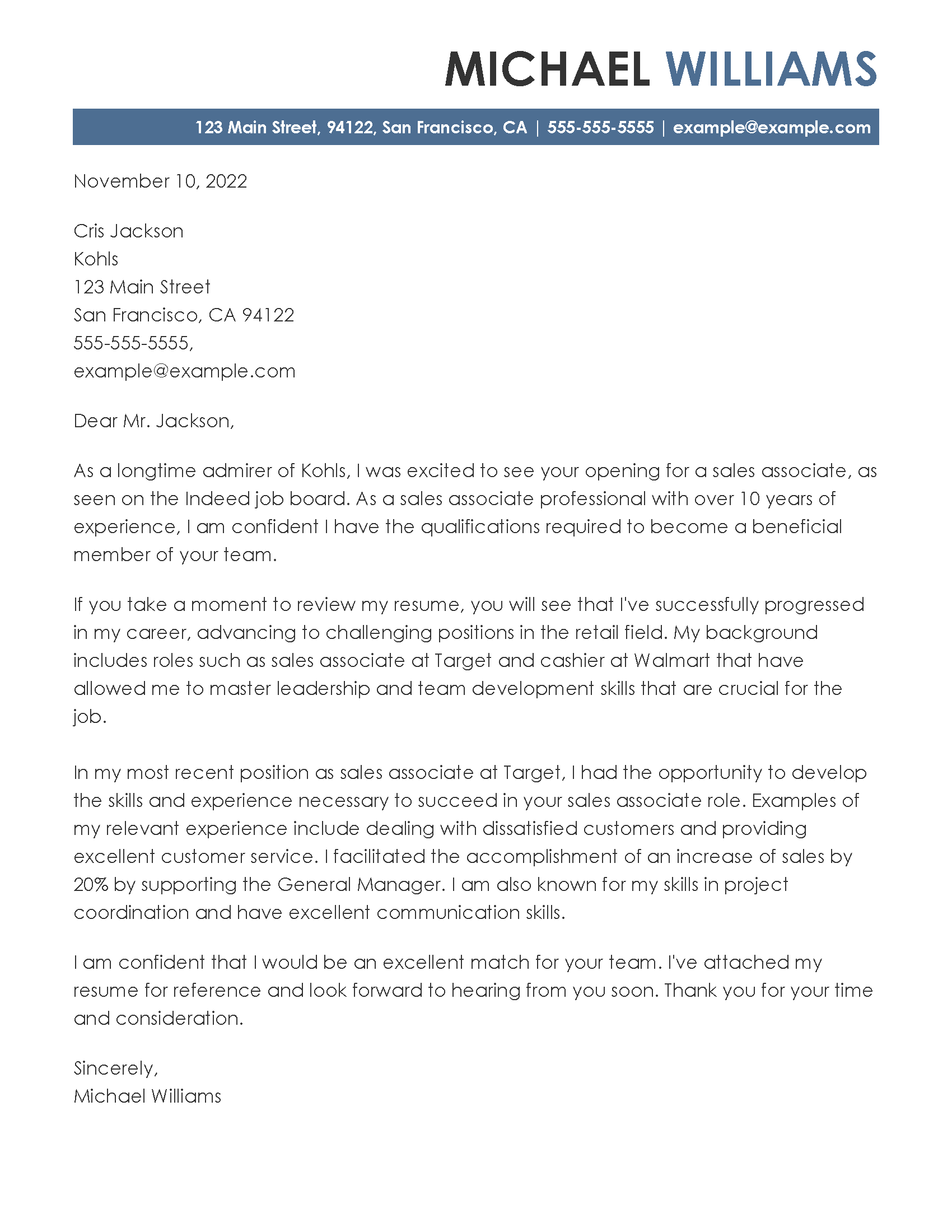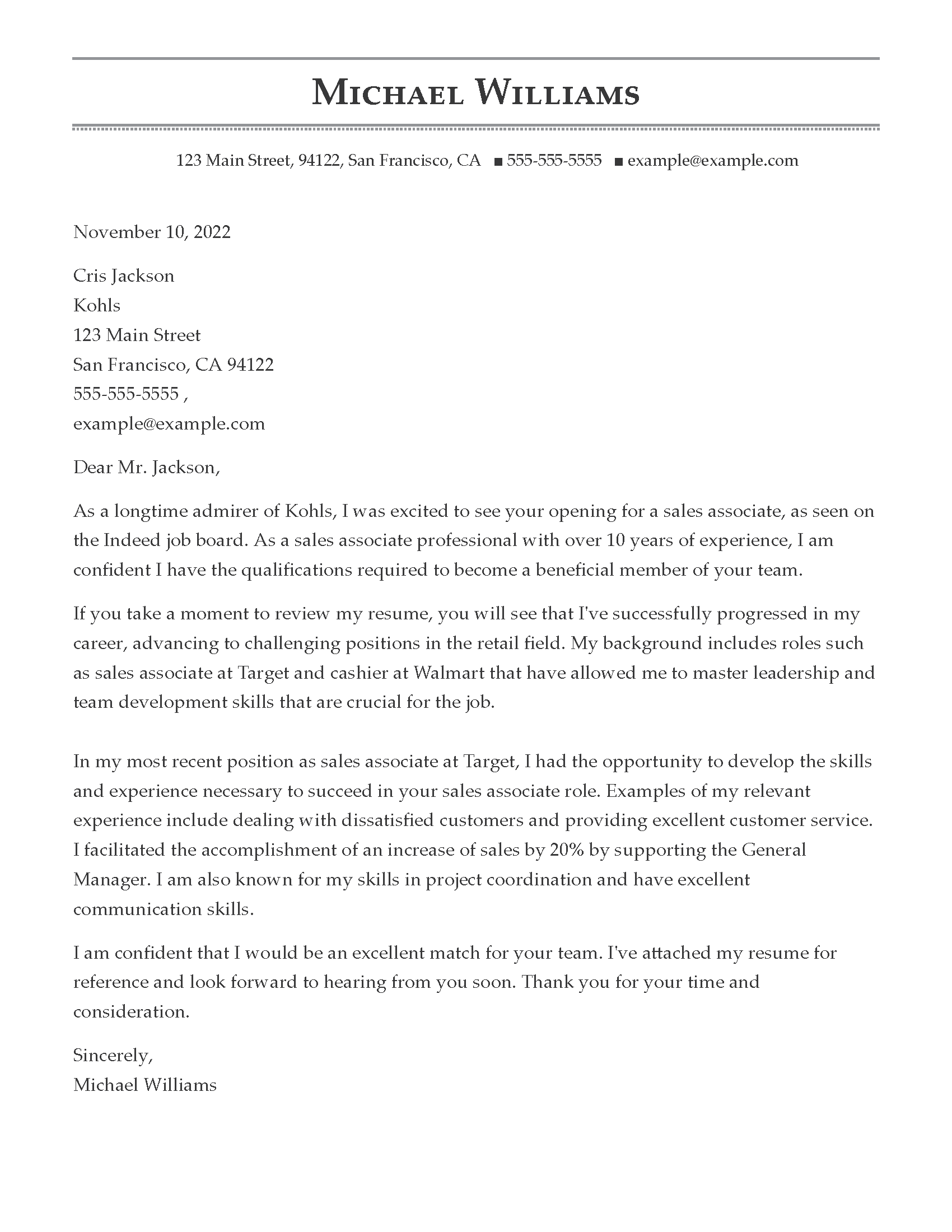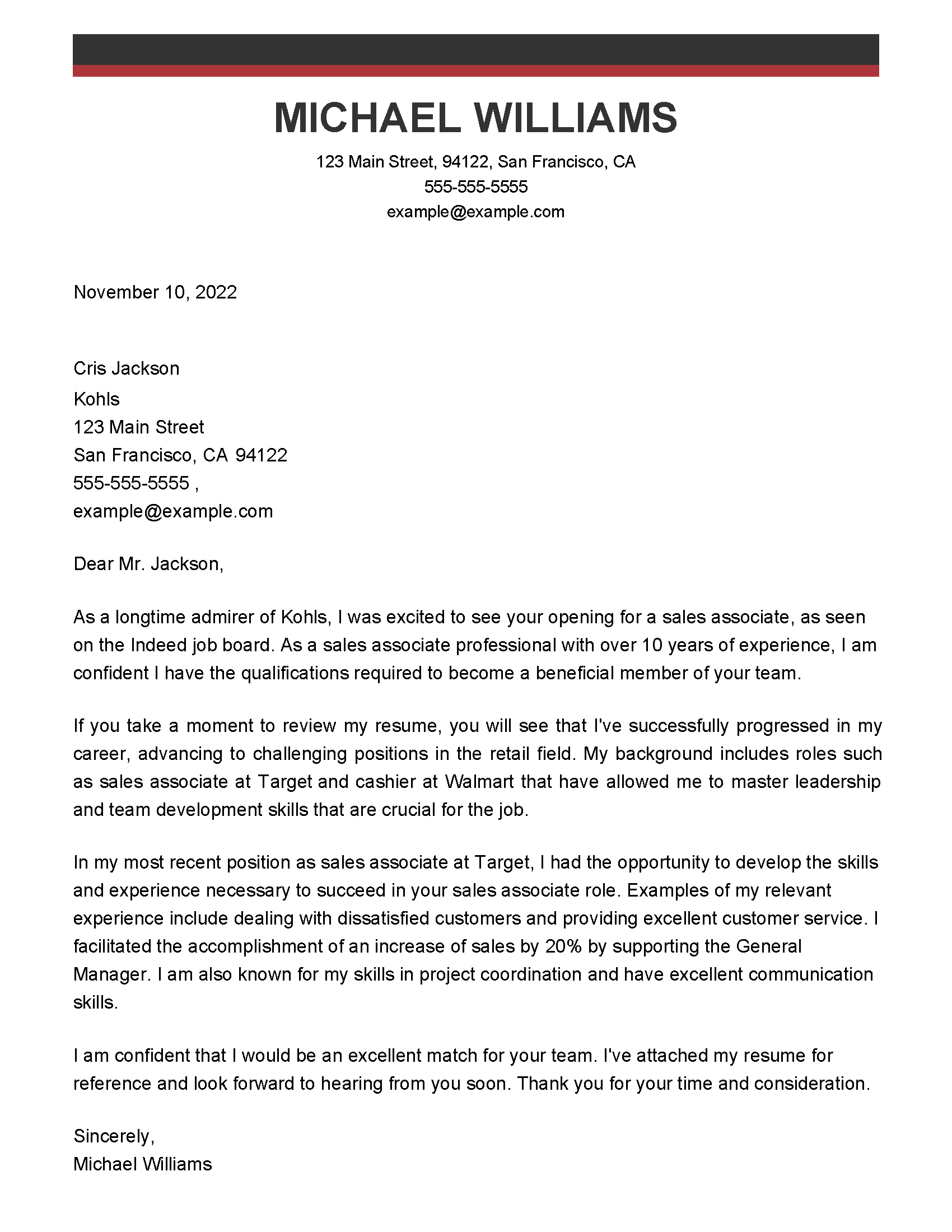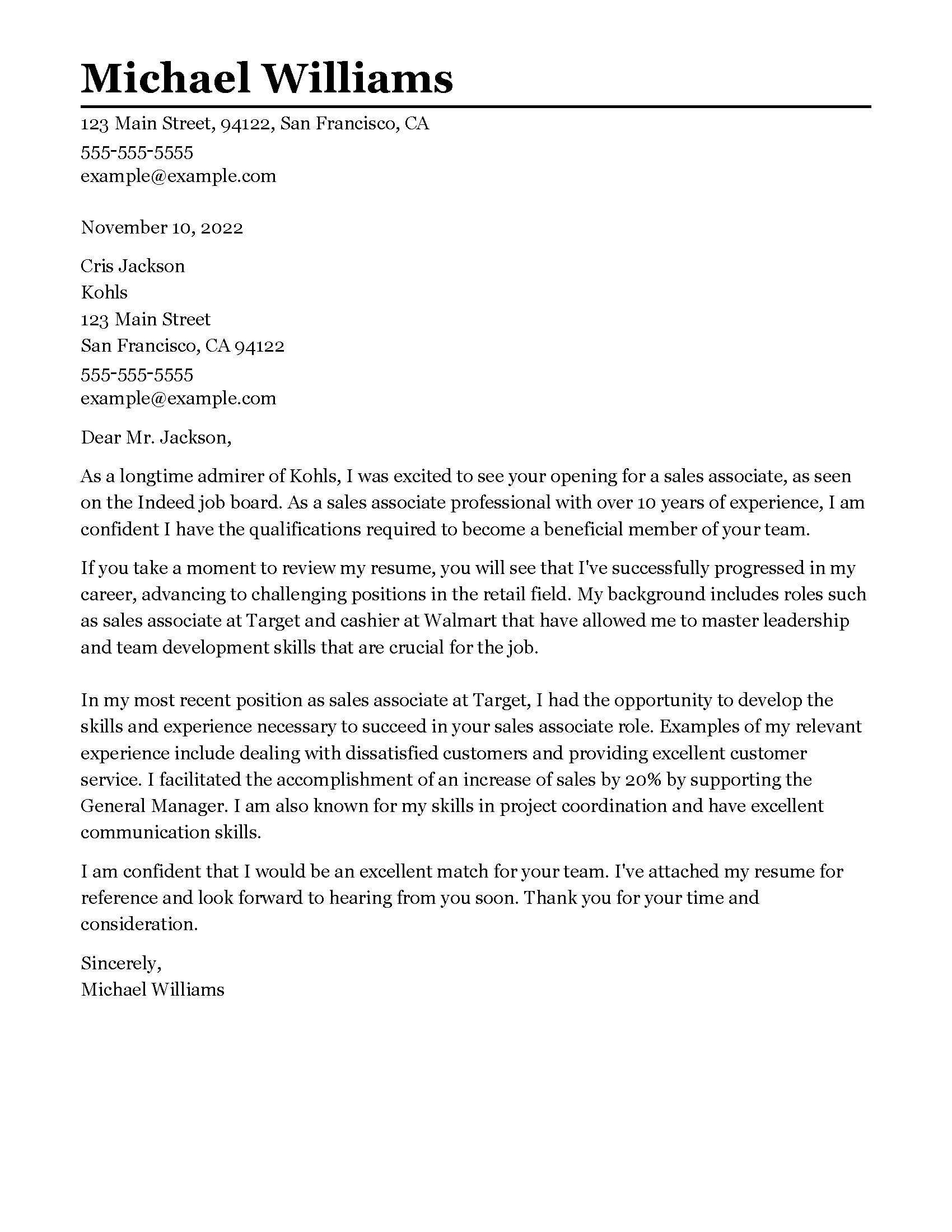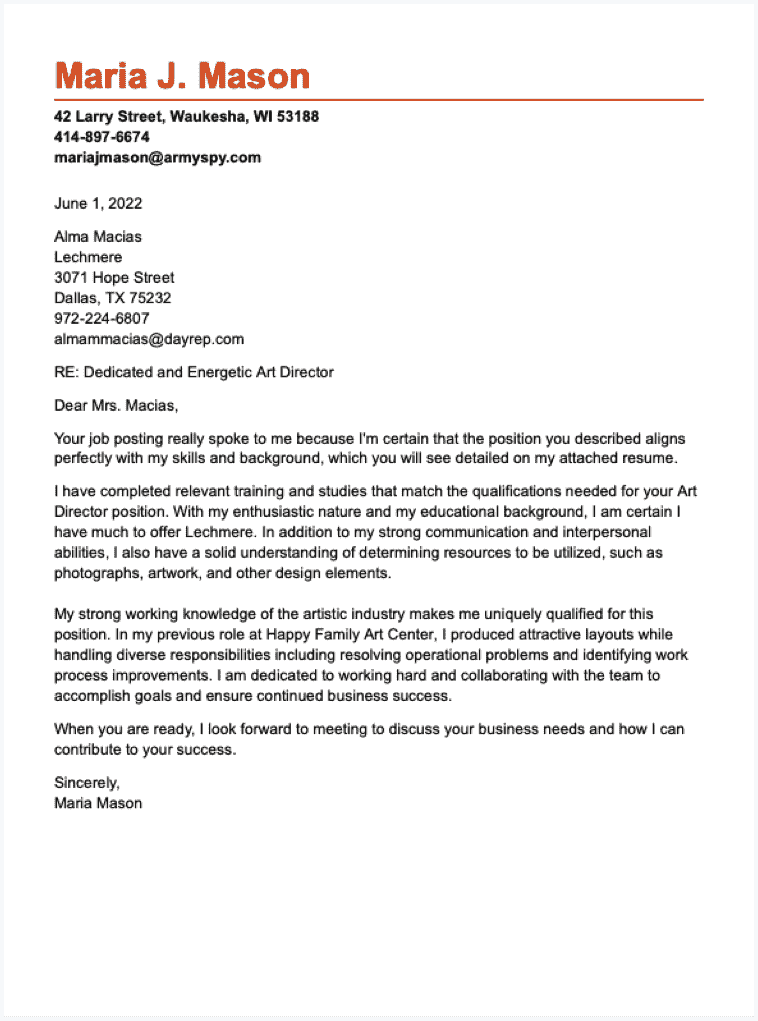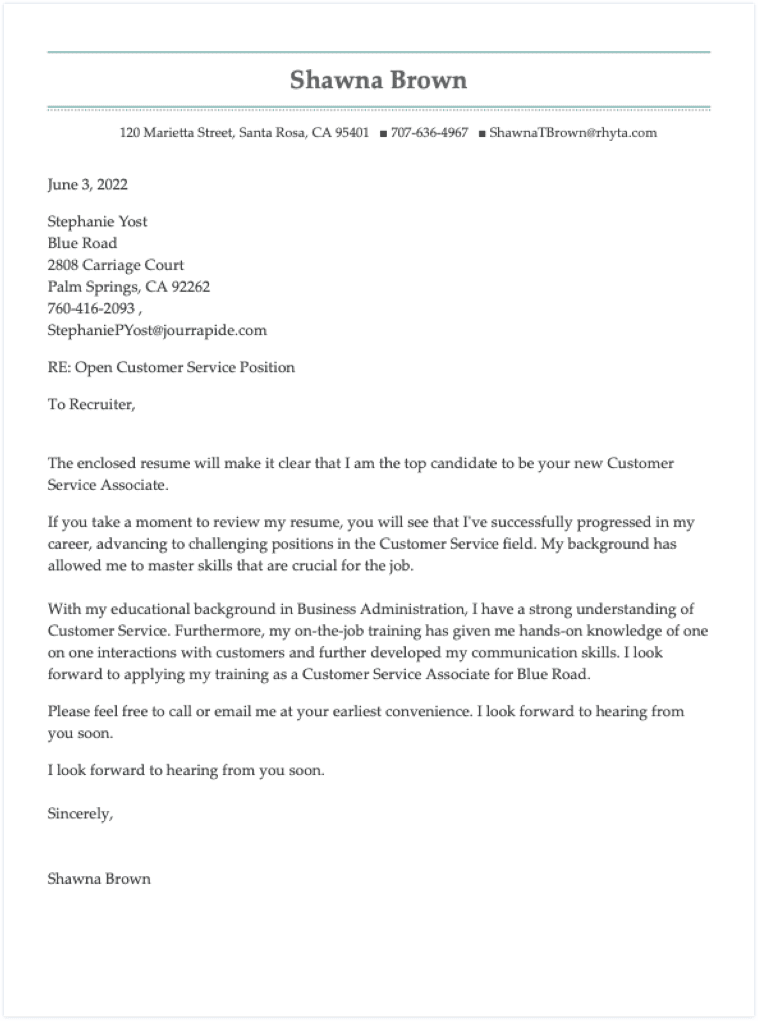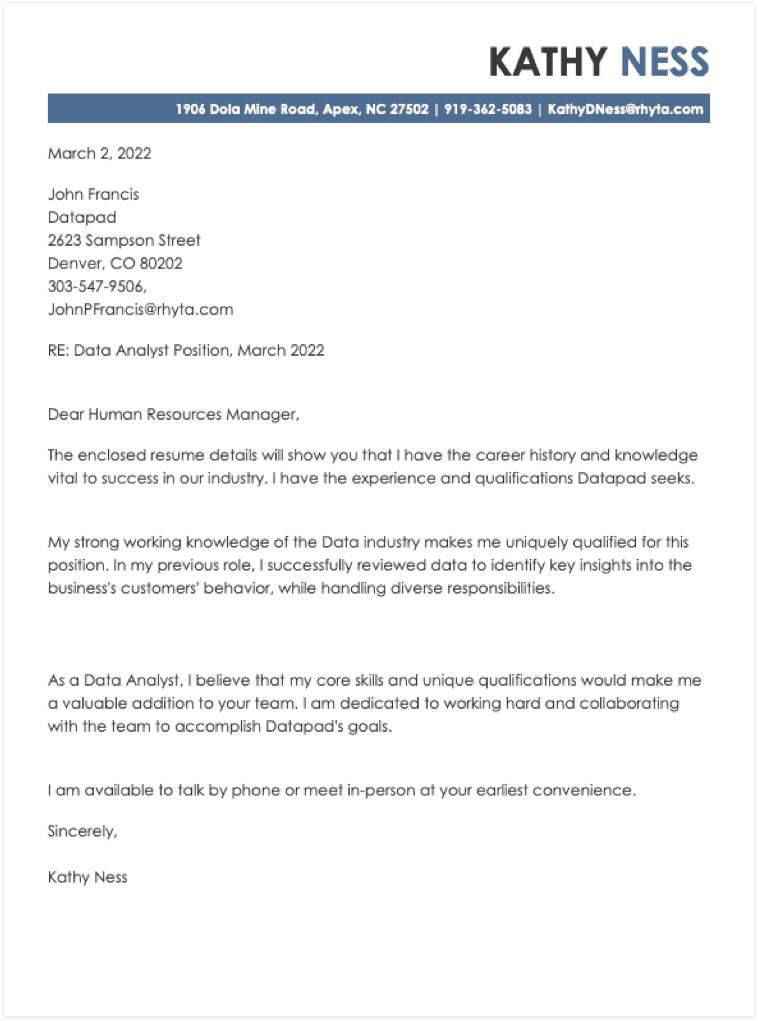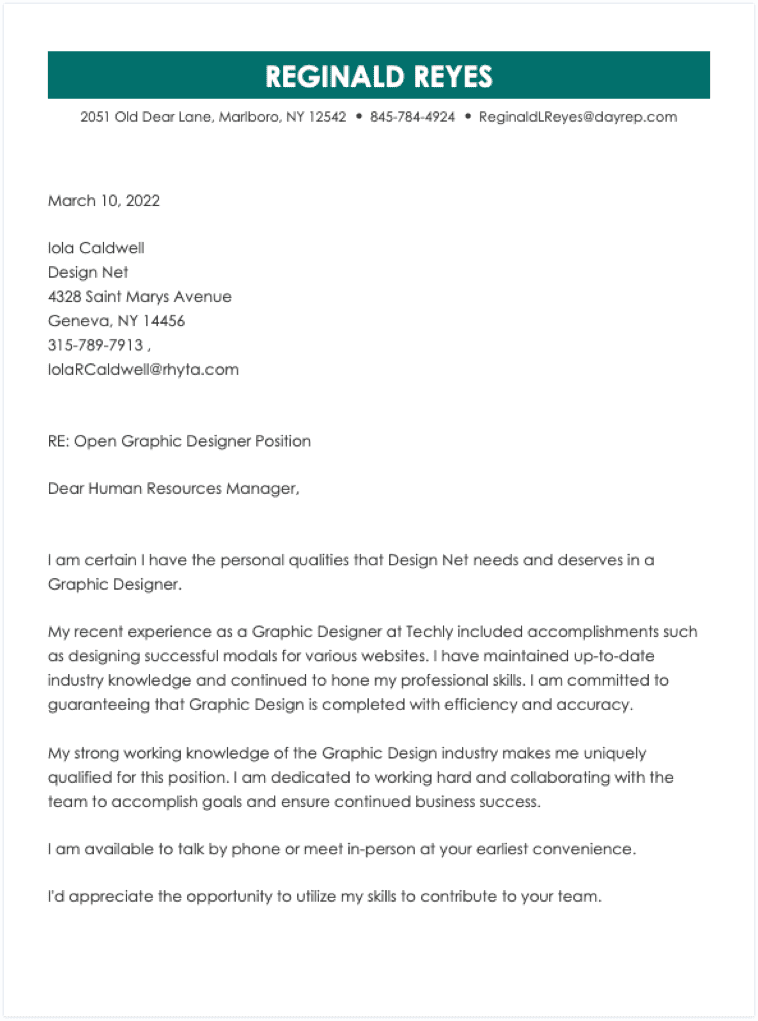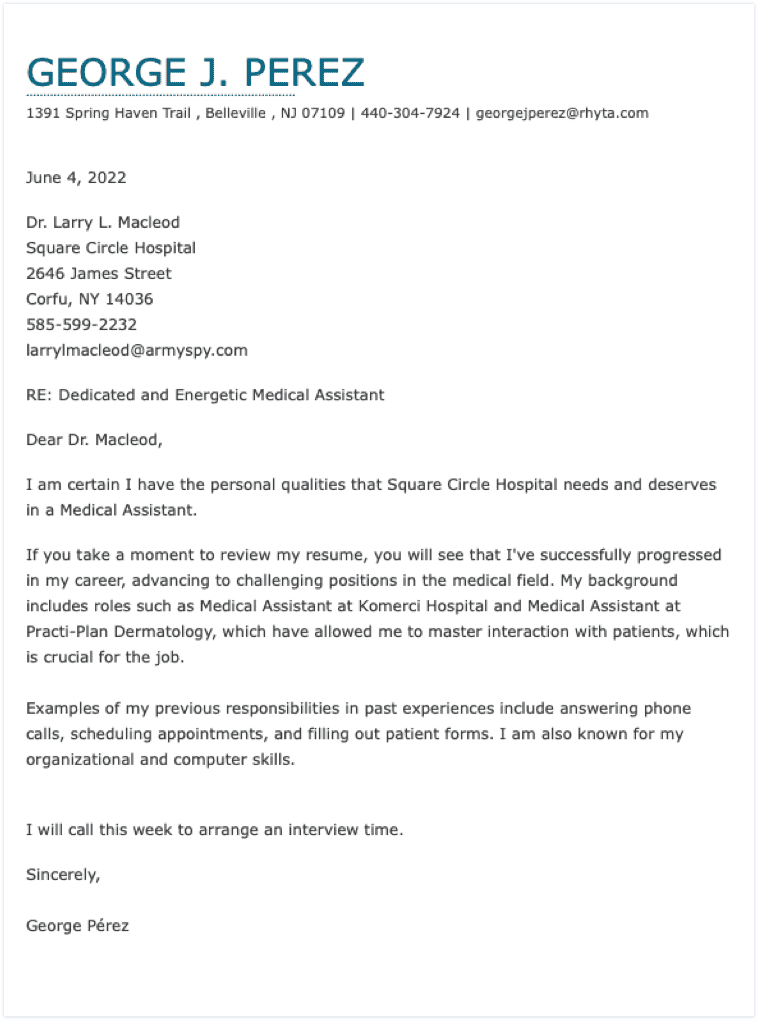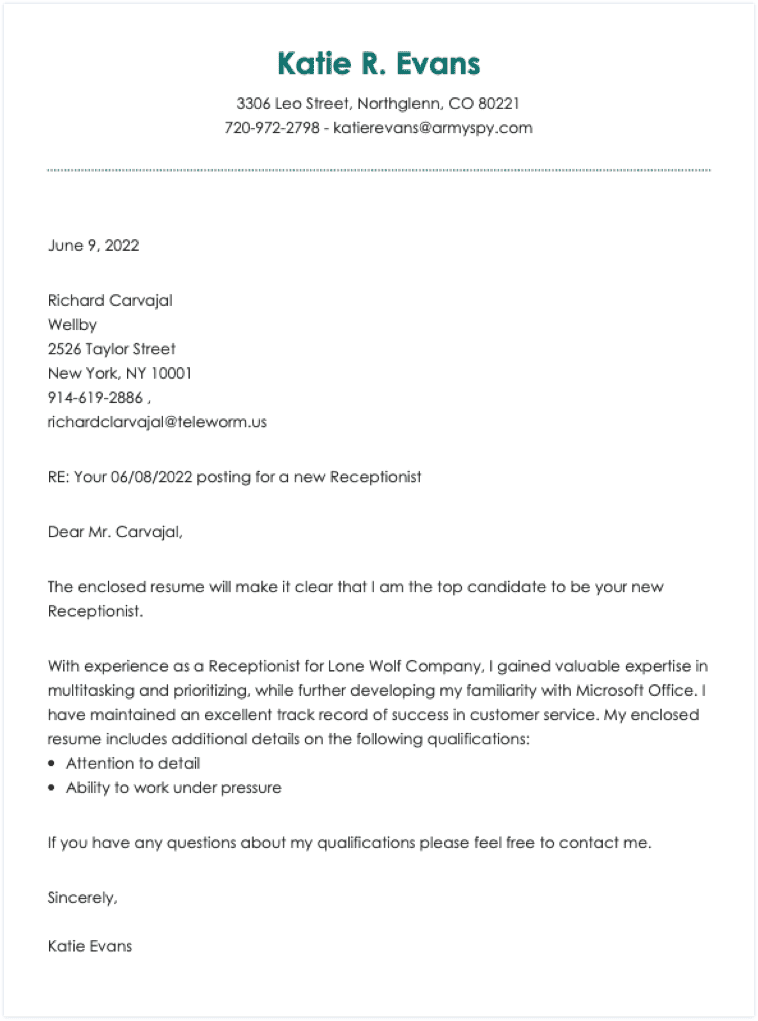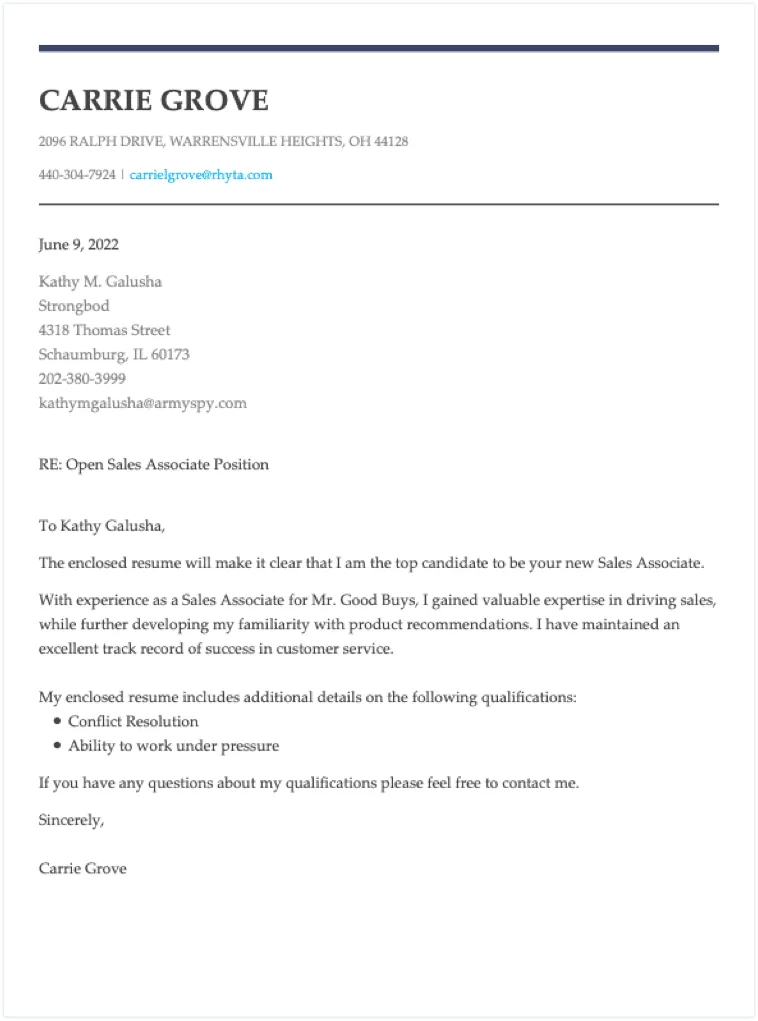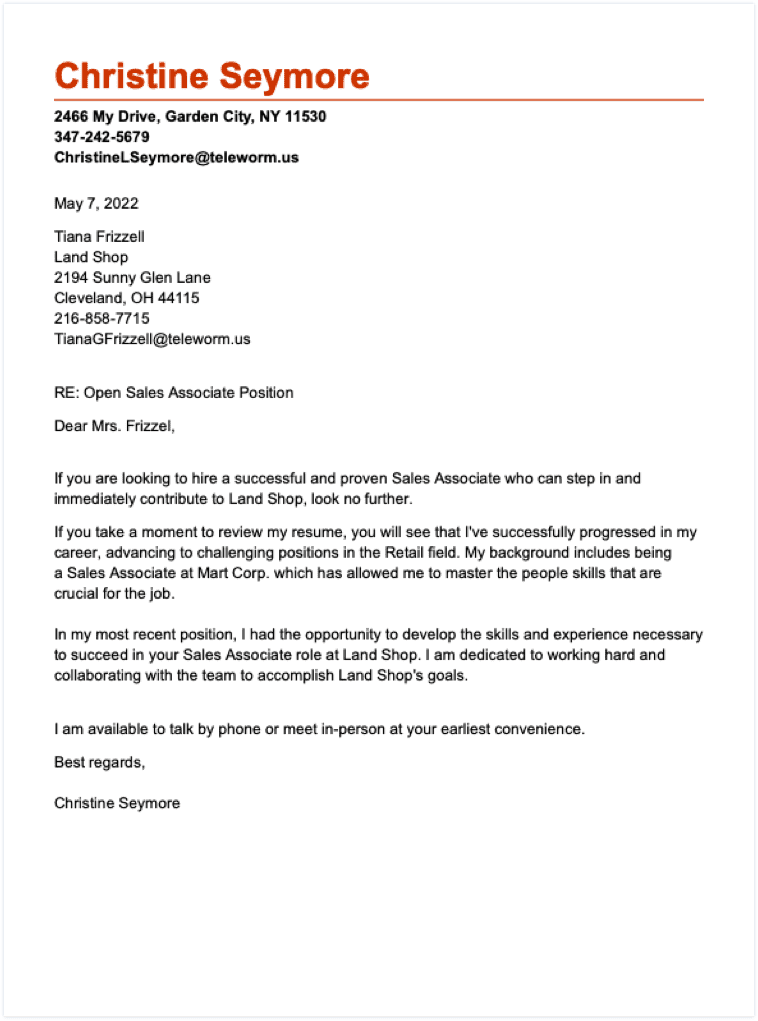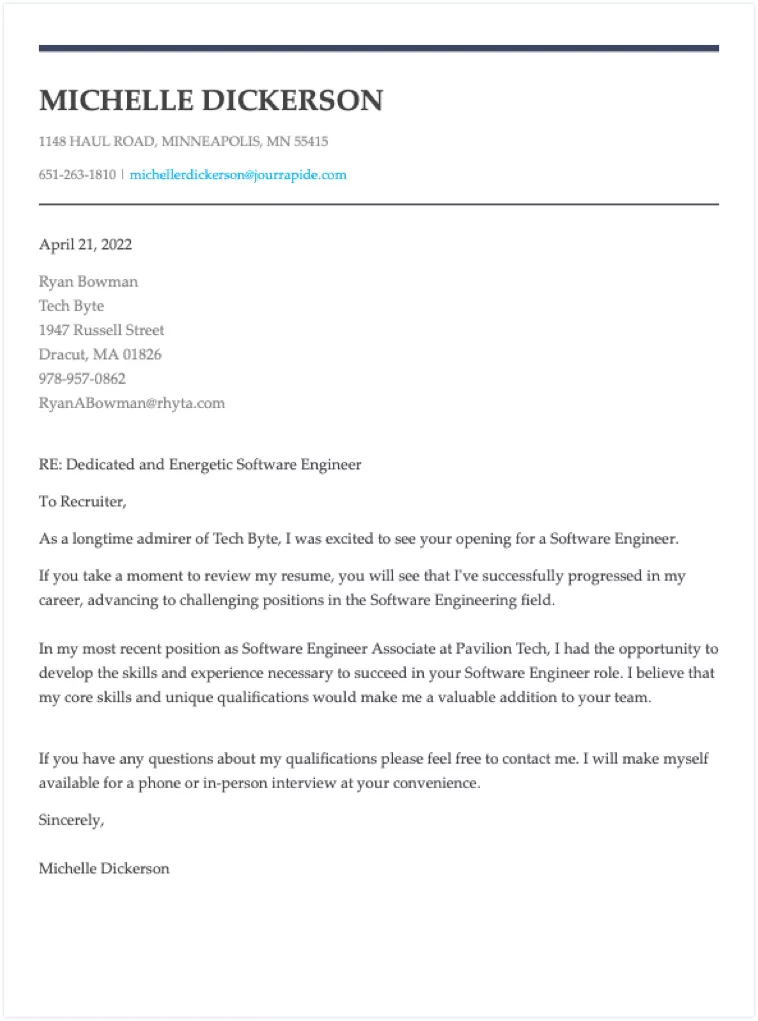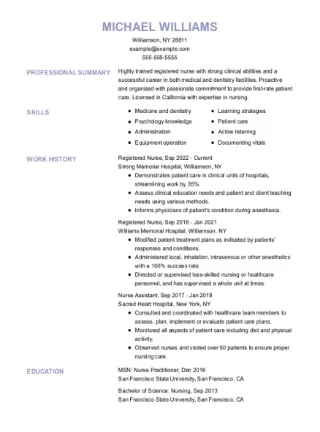How to Format a Cover Letter - Outlines & Examples
Follow our professional cover letter formats outline samples to learn everything about font type, font size, margins and more.
Our customers have been hired by*:*Foot Note

Cover letter format examples
General cover letter example
Career change cover letter example
Letter of interest sample
Sample of networking cover letter
Reference request cover letter sample
Internship cover letter example
Military transition cover letter example
Recruiter contact cover letter sample
Returning to workforce cover letter example
How to format your cover letter
Using the correct cover letter format will ensure that your professional cover letter reads and looks great to a potential employer. Here you’ll find all the formatting tips and cover letter format examples you need to create an eye-catching letter.
The best way to make sure your cover letter is readable to recruiters and hiring managers is by using the appropriate cover letter formatting. Follow the guidelines below and create a perfect cover letter that hits the mark:
Page margins:
As our cover letter format examples show, the margins of your document should be one inch all the way around.
Font type:
A proper cover letter format uses professional fonts like Arial, Verdana or Georgia — they are also among the best resume fonts. Extravagant fonts, like Comic Sans, are unprofessional and can confuse the applicant tracking systems (ATS) that employers use to filter resumes and cover letters.
Font size:
Your cover letter should be written in 12-point size with the exception of the header, which can be 14- or 16-point size.
Paragraph spacing:
Follow the lead of our cover letter format samples and keep the layout single-spaced with a double space between paragraphs.
Alignment:
Your text should be left-justified. The only area that can be centered, depending on the cover letter template you choose, is the header.
File format:
Download your cover letter as a PDF or Word document unless the job description specifies a preferred format.
Showcase the best you with a cover letter
Your cover letter should draw attention to the best parts of your resume, while also providing more information about how you can fill the job’s requirements. Your resume will contain basic facts about your past work experiences, while a cover letter allows you to elaborate on your strengths.
Build my cover letterCover letter formats and examples for any industry
Our cover letter examples are a great source of inspiration and a visual guide to understanding cover letter formats better. They make cover letter writing easier, especially if you don’t write very much.
Our examples will show you everything we’ve explained about cover letter formats, give you an idea of what you can write and also show you how to insert your own unique flair to really make your cover letter your own. At the end of the day, your personality will be what sells your skills and expertise to the hiring managers.
Follow the lead of ResumeHelp’s cover letter samples to make a perfect cover letter that’s ready for every job application.
FAQ: Cover letter formats
Have questions? We’re here to help.
How do you format a cover letter?
Typically, your cover letter should only be a few paragraphs long filled with details your resume didn’t cover, arranged like this:
- Your information, including contact information like a phone number
- The recipient’s information
- Salutation to the recipient
- Explanation of why you’re interested in the position
- A rundown of the skills and experience you have that are relevant to this position
- A request for an interview and closing statement
Usually, people include their full name, address, email and phone number in the header and links to any job networking profiles, such as LinkedIn or a portfolio.
Do I need an individual cover letter for every job application?
One of the best ways that a hiring manager can tell when a cover letter is “copied-and-pasted” is when the letter isn’t actually personalized to the job. Starting a letter with “To whom it may concern,” “Dear sir” or “Dear hiring manager” isn’t a good move, and using generated phrasing without proofreading creates an impersonal letter. You should make your cover letter unique for every single job application as the cover letter is what gives potential employers an idea of who you are. You need to tailor your cover letter to every workplace, every job and every hiring manager or you’ll find that the number of callbacks you get goes down dramatically.
However, personalizing a cover letter for every job you apply for doesn’t mean you need to start completely from scratch on each one. Start with a cover letter template and fill out the key points for each specific job. This will be your guideline for how to write the letter, making it much easier for you to adapt and update every time you need to create another cover letter.
Do job seekers really need a cover letter that badly?
A cover letter is your chance to introduce yourself and show off who you really are to your potential employer. While the resume lists all of your important skills and achievements, cover letters provide more detail about how you could benefit a company. Too many people don’t submit their resumes with a cover letter because they don’t feel like it’s really necessary. But in the current job market, a good cover letter can set you apart from the competition and get you a response from a potential employer.
This is true even if the job listing doesn’t state that you need a cover letter. Plus, it’s your opportunity to forge a connection with an employer and make a formal request for an interview. You should expect to write a cover letter, especially if you’re going through a career change, have employment gaps or don’t have a lot of work experience under your belt.
Should I use cover letter samples?
Yes! Cover letter samples are a great way to make your cover letter look better and be more effective in your given industry. A cover letter sample will typically either be from a professional writer who has experience in the field of writing cover letters or will be an actual cover letter that someone has used to get a job.
Remember, even the most simple cover letter samples aren’t just letters that you take and reuse wholesale, same with using a cover letter builder, you should use these tools as a guide for making your letter more professional while remaining personalized to your career needs.
Couldn't find the answer you're looking for?

